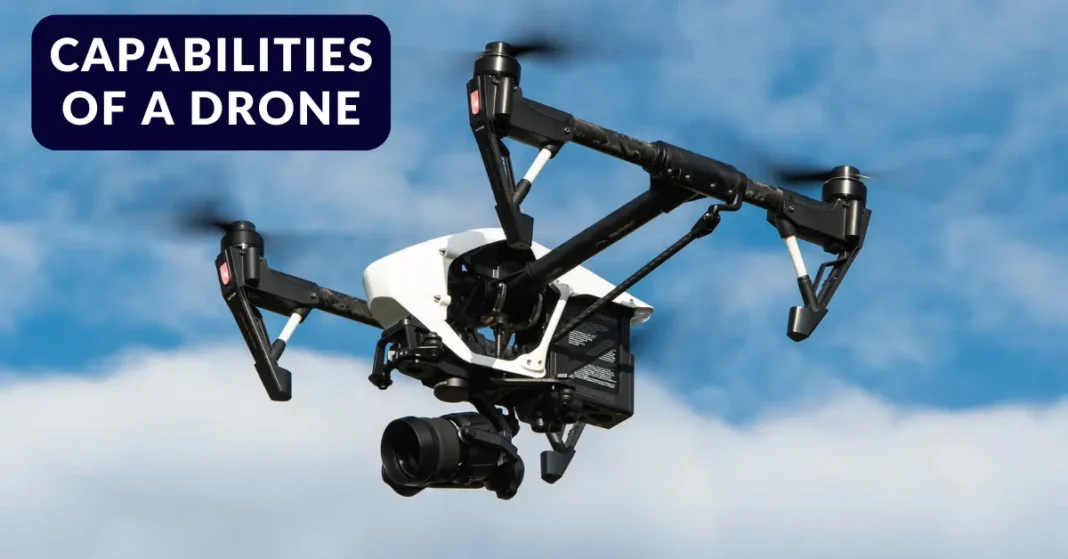The unrelenting march of technological evolution has ushered in an age where the once clear skies are now dotted with the agile presence of drones. These marvels of innovation have fundamentally transformed activities ranging from aerial photography to logistics, and even to sophisticated military operations. But what defines the operational prowess of these unmanned aerial vehicles (UAVs) is their flight range and altitude capabilities.
The flight range of a drone is not merely a testament to its battery prowess but a complex interplay of factors including signal strength, aerodynamics, and overall design efficiency.
Meanwhile, the maximum altitude a drone can aspire to achieve is bound by a tapestry of variables, legal frameworks, air density challenges, and mechanical constraints. This piece aims to navigate these lofty heights, unraveling the mysteries that cap the vertical expeditions of drones.
Table of Contents
Flight Range of Drones
Unleashing the Potential of Modern Drones: An Insight into Their Long-Range Capabilities
As tech enthusiasts scour for the edges of innovation, drones consistently capture headlines, revolutionizing everything from delivery systems to aerial photography. The cutting-edge progress in drone technology has particularly ramped up their travel capabilities. Today’s consumers and professionals alike are eager to understand just how far these high-flying marvels can venture on a single charge.
The latest generation of drones is setting new benchmarks for range and endurance. On average, consumer drones can now comfortably hit the 4-8 mile mark, a substantial leap from their predecessors.
However, professional-grade drones, equipped with robust battery life and energy-efficient motors, push this boundary even further. These aerial powerhouses, often utilized in commercial and research applications, can embark on flights exceeding 20 miles, and some specialized models boast ranges upward of 100 miles!
In assessing a drone’s range, factors such as weight, aerodynamics, battery capacity, and even weather conditions come into play. Advances in battery technology, especially the adoption of lithium-polymer batteries, have played a critical role.
Combined with more lightweight materials and enhanced power-management systems, modern drones can sustain longer flights than ever before, making them indispensable tools for tasks where inaccessibility and efficiency are paramount.
With this progress, it’s crucial to remind drone operators about regulatory guidelines that limit operational range within the line of sight, underscoring the need for responsible flying amidst technological advancements.
Maximum Altitude of Drone Flight
When exploring the upper limits of a drone’s flight capabilities, it’s essential to understand the concept of service ceiling – the maximum altitude at which a drone can sustain level flight. This operational boundary is determined by a mix of factors, primarily the thinning atmosphere at higher elevations and the machine’s power-to-weight ratio.
As a drone ascends, air density decreases, resulting in less lift produced by the propellers. Consequently, there’s a ceiling beyond which maintaining lift becomes an impossible task for the drone’s motors, regardless of how cutting-edge they are.
The drone’s design plays a pivotal role here. For drones to reach impressive heights without compromising stability or maneuverability, the manufacturer must strike an intricate balance between powerful motors capable of handling thin air and the overall weight of the craft.
Drones designed for high-altitude flight often feature larger propellers or high-efficiency motors to combat the challenges posed by lower air pressure. It’s not just about thrust; it’s about making that thrust count where the air is in short supply.
Additionally, the embedded software and flight control systems are critical to a drone’s service ceiling. Advanced algorithms are deployed to optimize the drone’s performance in various atmospheric conditions, enabling it to adjust to changing air pressure and temperature dynamically.
When all components—builders’ obsession with aerodynamic efficiency, relentless pursuit of power-to-weight optimization, and software that adapts in real-time—are combined, you get a drone that doesn’t only take to the skies but masters them comfortably at elevations that push the boundaries of what is technically feasible.
Understanding the technical capabilities and legal limitations of drone flight range and altitude underscores the importance of responsible drone operation and the potential for future advancements. As we chart the complex factors that govern how far and how high these unmanned ambassadors can soar, it’s evident that drones possess a remarkable potential to reshape industries and hobbies alike.
The horizons of drone technology continue to expand, promising to unlock new possibilities and challenges for an increasingly skyward-bound society. Through careful regulation and ongoing innovation, the future of drone technology glides ahead, elegantly navigating the delicate balance between human ambition and the laws of physics and legality that keep these machines tethered to Earth’s embrace.
Final Takeaway
How far can a drone fly?
In general, consumer drones, like those used for recreational purposes or photography, typically have a flight range of around 1 to 10 miles (1.6 to 16 kilometers). Professional and specialized drones might have longer ranges, potentially exceeding 30 miles (48 kilometers).
How high can a drone fly?
The maximum altitude a drone can legally fly depends on the regulations set by the country’s aviation authority. In the United States, for example, the Federal Aviation Administration (FAA) typically restricts drone flights to a maximum altitude of 400 feet (about 122 meters) above ground level. This limitation is in place to ensure the safety of manned aircraft and other airspace users.





